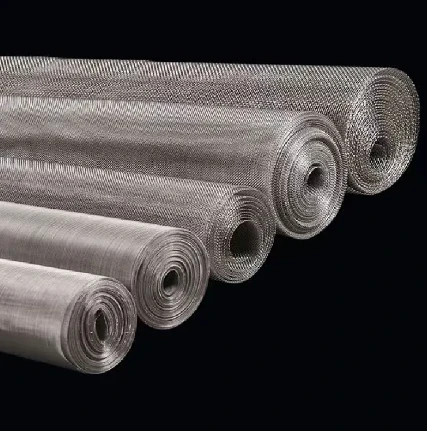-
 Afrikaans
Afrikaans -
 Albanian
Albanian -
 Amharic
Amharic -
 Arabic
Arabic -
 Armenian
Armenian -
 Azerbaijani
Azerbaijani -
 Basque
Basque -
 Belarusian
Belarusian -
 Bengali
Bengali -
 Bosnian
Bosnian -
 Bulgarian
Bulgarian -
 Catalan
Catalan -
 Cebuano
Cebuano -
 China
China -
 Corsican
Corsican -
 Croatian
Croatian -
 Czech
Czech -
 Danish
Danish -
 Dutch
Dutch -
 English
English -
 Esperanto
Esperanto -
 Estonian
Estonian -
 Finnish
Finnish -
 French
French -
 Frisian
Frisian -
 Galician
Galician -
 Georgian
Georgian -
 German
German -
 Greek
Greek -
 Gujarati
Gujarati -
 Haitian Creole
Haitian Creole -
 hausa
hausa -
 hawaiian
hawaiian -
 Hebrew
Hebrew -
 Hindi
Hindi -
 Miao
Miao -
 Hungarian
Hungarian -
 Icelandic
Icelandic -
 igbo
igbo -
 Indonesian
Indonesian -
 irish
irish -
 Italian
Italian -
 Japanese
Japanese -
 Javanese
Javanese -
 Kannada
Kannada -
 kazakh
kazakh -
 Khmer
Khmer -
 Rwandese
Rwandese -
 Korean
Korean -
 Kurdish
Kurdish -
 Kyrgyz
Kyrgyz -
 Lao
Lao -
 Latin
Latin -
 Latvian
Latvian -
 Lithuanian
Lithuanian -
 Luxembourgish
Luxembourgish -
 Macedonian
Macedonian -
 Malgashi
Malgashi -
 Malay
Malay -
 Malayalam
Malayalam -
 Maltese
Maltese -
 Maori
Maori -
 Marathi
Marathi -
 Mongolian
Mongolian -
 Myanmar
Myanmar -
 Nepali
Nepali -
 Norwegian
Norwegian -
 Norwegian
Norwegian -
 Occitan
Occitan -
 Pashto
Pashto -
 Persian
Persian -
 Polish
Polish -
 Portuguese
Portuguese -
 Punjabi
Punjabi -
 Romanian
Romanian -
 Russian
Russian -
 Samoan
Samoan -
 Scottish Gaelic
Scottish Gaelic -
 Serbian
Serbian -
 Sesotho
Sesotho -
 Shona
Shona -
 Sindhi
Sindhi -
 Sinhala
Sinhala -
 Slovak
Slovak -
 Slovenian
Slovenian -
 Somali
Somali -
 Spanish
Spanish -
 Sundanese
Sundanese -
 Swahili
Swahili -
 Swedish
Swedish -
 Tagalog
Tagalog -
 Tajik
Tajik -
 Tamil
Tamil -
 Tatar
Tatar -
 Telugu
Telugu -
 Thai
Thai -
 Turkish
Turkish -
 Turkmen
Turkmen -
 Ukrainian
Ukrainian -
 Urdu
Urdu -
 Uighur
Uighur -
 Uzbek
Uzbek -
 Vietnamese
Vietnamese -
 Welsh
Welsh -
 Bantu
Bantu -
 Yiddish
Yiddish -
 Yoruba
Yoruba -
 Zulu
Zulu
building netting
Building Netting A Critical Component in Construction Safety and Efficiency
In the construction industry, safety and efficiency are paramount. One of the essential tools that address these concerns is building netting. This innovative product serves multiple purposes on construction sites, ranging from protecting workers and pedestrians to enhancing site organization. Understanding the importance and applications of building netting can significantly contribute to safer and more efficient construction practices.
What is Building Netting?
Building netting is a form of synthetic mesh that is commonly used in construction projects. It is typically made from materials such as polyethylene or polypropylene, which are known for their durability and resistance to harsh weather conditions. The netting is designed to catch falling debris, thereby preventing accidental injuries to workers and passersby.
Safety Benefits
One of the primary advantages of using building netting is its ability to enhance safety on construction sites. High-rise buildings, bridge constructions, and other large projects often involve heavy materials that, if dropped, could cause serious harm. By installing netting around scaffolding and open construction areas, the risk of injury can be minimized significantly. Furthermore, building netting also protects scaffolds from wind and rain, thereby preventing accidents that may arise from weather-related conditions.
In addition to safeguarding people, building netting can help prevent the loss of tools and equipment
. Construction sites are bustling environments, and it's not uncommon for workers to misplace items. By using netting strategically, these essential tools can be secured and kept from falling, reducing the cost of replacement and saving time on the job.building netting

Efficiency and Cleanliness
Beyond safety, building netting is instrumental in maintaining cleanliness on the construction site. Construction sites can be notoriously messy, with debris scattered everywhere. Building netting can confine materials and debris to specific areas, aiding in site organization. This cleanliness not only promotes safety by reducing tripping hazards but also enhances productivity by allowing workers to operate in an orderly environment.
Moreover, building netting can serve as a temporary barrier that delineates the construction zone from the surrounding area. This separation can reduce distractions for workers and help maintain focus on the tasks at hand. Additionally, it can minimize the impact of noise and dust on nearby neighbors, contributing to community relations.
Environmental Considerations
As the construction industry increasingly embraces sustainable practices, building netting has adapted as well. Many modern netting products are designed to be environmentally friendly, made from recyclable materials. This aspect is crucial for companies looking to reduce their carbon footprint and practice responsible construction methods.
Conclusion
In summary, building netting plays a critical role in the construction industry by enhancing safety, improving efficiency, and promoting cleanliness. It acts as a protective barrier, preventing accidents and safeguarding tools and equipment. Additionally, its contribution to site organization and community relations cannot be overlooked. As construction continues to evolve, incorporating innovative solutions like building netting will be essential for maintaining high standards of safety and efficiency. Adopting such practices not only protects workers but also fosters a more productive and harmonious construction environment.
-
Shipping Plastic Bags for Every NeedNewsJul.24,2025
-
Safety Netting: Your Shield in ConstructionNewsJul.24,2025
-
Plastic Mesh Netting for Everyday UseNewsJul.24,2025
-
Nylon Netting for Every UseNewsJul.24,2025
-
Mesh Breeder Box for Fish TanksNewsJul.24,2025
-
Expanded Steel Mesh Offers Durable VersatilityNewsJul.24,2025











